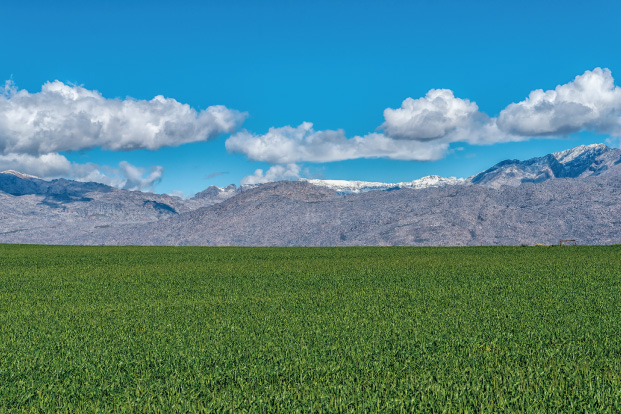How to export your fresh produce into Asia and Africa

Promising rainfall prospects for 2016/2017 summer season
November 29, 2016
Good weather has positive effect on South African grapes
December 6, 2016Africa and Asia offer much allure for South African fresh produce exporters. But this country’s farmers must do their homework well before they plunge into these markets. Wilma den Hartigh reports.
South Africa’s fresh produce sector operates in an environment that is changing faster than ever before. There are new markets for fresh produce, consumer preferences are changing, and people are asking more questions about the origins of their food. Growers have to adapt to these trends if they wish to remain relevant.
The central message was that exporting should be about more than simply sending products to another country; growers must visit export destinations to understand what consumers want, see where their produce will be sold, and consider farming beyond South Africa’s borders.
Africa
Don’t export produce only
There is much talk about the opportunities that exist to export South Africa’s fruit to new markets in Africa, but perhaps it is time for the sector to review this approach.
“We have a way of thinking that tells us we can only send products into Africa. This thinking limits us and we have to move away from it,” says Ram Ottapathu, CEO of the Choppies Group, a large grocery supermarket chain in Botswana.
Choppies offers valuable insights from a retailer’s perspective on the African market. The group has a 50% market share in Botswana and targets lower- to middle-income consumers, but it is also starting to attract upper-middle class shoppers.
It has a footprint in South Africa and Zimbabwe and plans to establish operations in Tanzania and Kenya. Ottapathu says that conventional thinking about exporting focuses on supplying produce, but this should only be one aspect of a market access strategy.
South Africa’s farming community should also be helping other farmers on the continent.
“Instead of supplying produce only, take your expertise and technology to small-scale farmers in Africa and help them to produce more effectively. Doing this will strengthen agricultural production in the region.”
Helping farmers in Africa will help drive growth and development, creating new markets for food and making the continent attractive to retailers who want to establish or expand their operations. And the more retailers there are, the larger will be the market for farmers to supply.
“Without this, we can’t sustain growth and development on the continent for retailers,” stresses Ottapathu.
Hans Balyamujura, CEO of the ZED Group Limited, a consultancy with a special interest in smallholder agriculture development, agrees that South Africa’s farmers should consider relocating their operations to other African countries.
This could make economic sense, he says, as the cost of production could be lower.
Author and African business specialist, Victor Kgomoeswana, advises farmers to keep track of where retailers take their businesses in Africa, as this indicates demand.
“Wherever Shoprite is, go there. Choppies is also on track to reach 200 stores by the end of 2016. It doesn’t matter how mature a market might be, there’s always room for new entrants. As long as your business model is adaptable, you can open new markets for yourself.”
Unite with other farmers
Retailers need the assurance of supply, volumes and quality, but in sub-Saharan Africa, this is an ongoing constraint.
“Unlike in South Africa, there aren’t large-scale farmers in the rest of sub-Saharan Africa. Community farming is a solution to this problem,” says Kgomoeswana.
One small-scale farmer alone cannot supply a retailer, but supermarkets would be willing to enter into supply contracts with a group of farmers who could consistently supply a single product.
Make Nigeria a key focus
Kgomoeswana says that Nigeria is a market that South Africa’s farmers cannot ignore.
“Unless you’ve visited that country and done business in it, you are slowly becoming irrelevant,” he says.
Nigeria should be a key focus for agribusinesses as it is diversifying its economy, reducing its reliance on oil and renewing its interest in agriculture. However, operating successfully in this market will involve give-and-take.
“It isn’t enough to only export produce there. Don’t dump your third-grade produce on the continent. You have to produce [food] in that country and then also import from them,” he says.
ASIA
Understand the Chinese market
Jason Bosch, director of fruit trading company, Origin Direct Asia, says that there are misconceptions about the Chinese market. “What we’re failing to see is that the Chinese are not starving, can survive without our fruit and the market can be saturated quickly.”
This, he argues, is why South Africa should be taking a more strategic approach to supplying this market. The country must develop a free-trade agreement to improve the ease with which fruit is exported to China. South Africa currently pays duties to send its fruit to China.
Local growers who want to access this market should take a long-term approach, he says.
“There’s no quick money to be made in China and you must supply high-quality products with the correct specifications.”
Visit China
Cecilia Landman, CEO of fruit exporting company the X Group, stresses that growers cannot access a new market without visiting that country.
“You need to see a country to understand what consumers want. People operating in China are fruit specialists, so quality counts.”
Farmers should keep in mind that Chinese consumers are superstitious, and colours, numbers and symbols have meaning. This is an important consideration when developing product branding and packaging.
“Red is symbolic of luck and success, green signifies money and eight is a lucky number that signifies wealth and prosperity,” says Landman. Growers cannot afford not to be in China.
“There are 1,3 billion people and the number of affluent consumers is increasing. As the country develops, there’ll be greater need for year-round supply and we can supply in the counter-season.”
Source: FarmersWeekly



